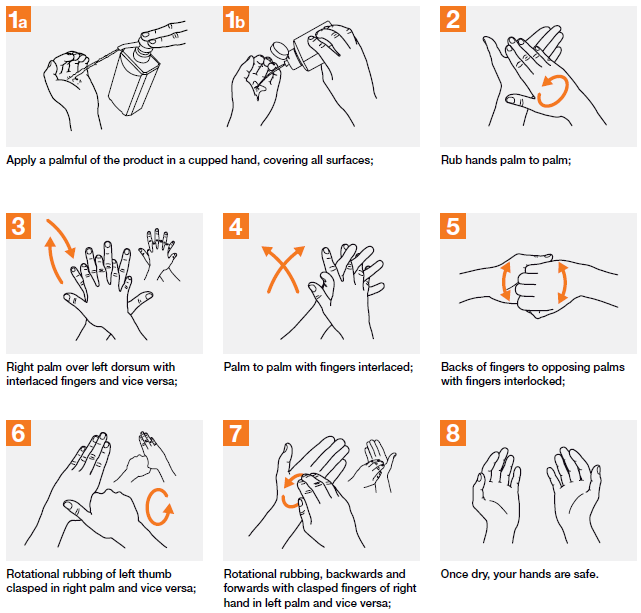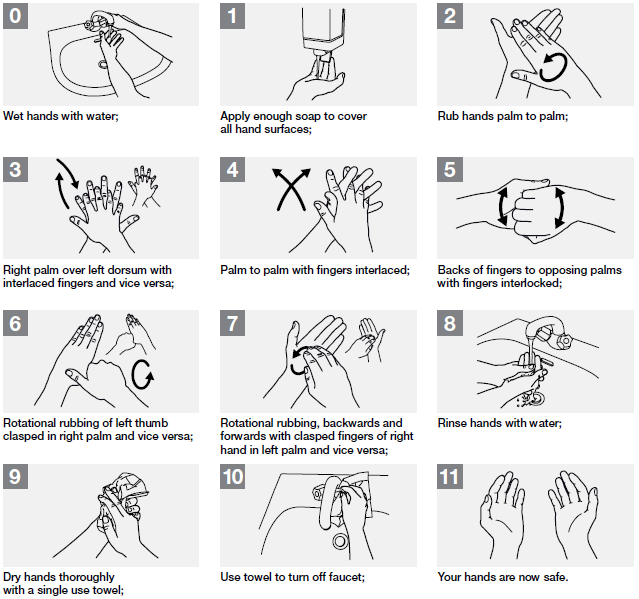
What is hand hygiene?
Hand hygiene is cleaning your hands. Regular hand washing is one of the best ways to remove germs, avoid getting sick, and prevent the spread of germs to others.
How do you do it?
Hands can be cleaned using soap and water or an alcohol-based hand sanitizer. Cleaning your hands only takes 20-30 seconds.
- Using Hand Sanitizer – Hand sanitizer contains alcohol and is a flammable liquid. Flammable liquids should be stored away from ignition sources. Follow the instructions on the label.

- Using Soap and Water

When should you clean your hands?
Clean your hands often to prevent the spread of bacteria and viruses that can cause disease, such as COVID-19. Wash hands before starting work and before eating, drinking, or using tobacco products. Then wash your hands after coughing/sneezing, using the bathroom, emptying garbage, touching animals, or anytime they could have gotten dirty.
What should we do when we do not have running water at our work site or hand sanitizer?
A portable hand wash station can be made using a table, container with a hands-free spout, and a five-gallon bucket. Wastewater caught in the five-gallon bucket should be poured down a drain. Be sure to keep soap and paper towels stocked at all hand washing facilities.
Download a PDF of this Toolbox Talks in English
Download a PDF of this Toolbox Talks in Spanish
